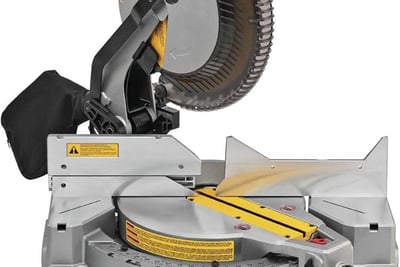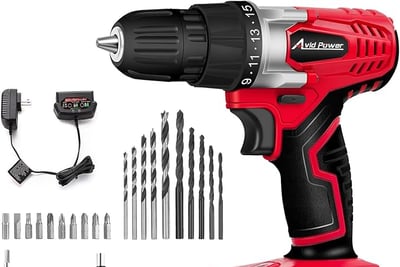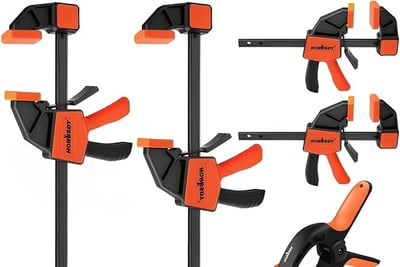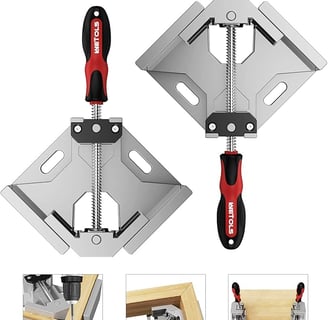How to Build a DIY Coffee Table from Reclaimed Wood
8 min read


Introduction to DIY Coffee Tables
Building your own DIY coffee table can be an enriching and practical endeavor, particularly when utilizing reclaimed wood as your core material. The appeal of DIY projects lies in their potential for creativity, allowing individuals to express their unique style and preferences while crafting functional pieces for their living spaces. A coffee table, being a central part of the living room, serves as an ideal starting point for those interested in engaging with DIY furniture projects.
Choosing reclaimed wood for a coffee table construction not only results in distinctive furniture pieces but also champions sustainability in home decor. Reclaimed wood is sourced from materials that have been previously used, such as old buildings, barns, or furniture, thereby reducing waste and environmental impact. This choice contributes positively to a more eco-friendly lifestyle, as it diminishes the demand for newly harvested timber and supports the circular economy.
The character that reclaimed wood brings to a DIY coffee table is unparalleled. Each piece has its own history, complete with unique textures, colors, and imperfections that tell a story. This distinctive quality adds warmth and charm to any room, creating a conversation starter that enhances the overall aesthetic of your home. Furthermore, the process of building the coffee table yourself allows for a personalized touch that can reflect your individual taste and suit your living environment perfectly.
Beyond aesthetics, embarking on this DIY project can also yield financial benefits. Creating your own coffee table can be significantly less expensive than purchasing a ready-made product from retailers. In addition to saving money, you also gain the satisfaction of crafting a piece that is tailored specifically to your needs. Engaging in this creative pursuit can lead to a deeper appreciation for your furniture and transform the way you view home decor.
Choosing the Right Reclaimed Wood
When embarking on a DIY coffee table project, selecting the right reclaimed wood is a crucial first step that can influence both the aesthetics and durability of the finished piece. There are various sources from which one can obtain reclaimed wood, each offering unique characteristics and value. Common sources include old barns, deconstructed furniture, shipping pallets, and even urban trees that have been salvaged. Each type of reclaimed wood may showcase distinct grains, colors, and histories, allowing for a customization that new wood cannot provide.
Before committing to a particular source, it is essential to assess the quality of the wood. Examine the boards for signs of wear, damage, or rot, as these factors can significantly affect both the strength and appearance of your coffee table. Look for areas that may have splintered or that exhibit insect infestations, as both of these issues can compromise the integrity of the wood. A visual inspection should also include checking for moisture content; ideally, the wood should feel dry to the touch and show minimal warping or cracks.
Safety is another important consideration when choosing reclaimed wood. Ensure that the wood has not been treated with harmful chemicals, such as those found in some pallets, to prevent health risks. If the wood comes from furniture or structural elements, it is wise to verify that it has not been exposed to substances unsuitable for indoor use. Furthermore, reputable suppliers will often provide insights into the wood’s history and previous usage, which can aid in making informed choices.
By carefully selecting and evaluating the reclaimed wood, you can ensure that your DIY coffee table will not only be visually striking but also sturdy and safe for everyday use. Engaging in the thoughtful acquisition of reclaimed materials enriches the overall building experience and contributes to sustainable practices.
Tools and Materials Needed
To successfully build a DIY coffee table from reclaimed wood, it is essential to gather the appropriate tools and materials. Each item plays a crucial role in ensuring your project is executed efficiently and effectively.
Firstly, the necessary tools include a circular saw or a miter saw. These are essential for cutting wood planks to the desired sizes. A handheld sander, or alternatively, a power sander, will be required for smoothing the surfaces of the wood, eliminating any rough spots that may detract from the table's aesthetics. Additionally, a drill is crucial for making holes and fastening screws in place; it enables you to join pieces securely, ensuring stability in the finished product.
Moreover, a measuring tape is indispensable for accurately measuring wood dimensions, thereby ensuring that all parts fit together seamlessly. A square is also recommended to guarantee right angles when assembling the coffee table, ensuring a polished finish that is visually appealing.
In terms of materials, start with reclaimed wood planks. These not only add character but also contribute to an eco-friendly approach to furniture making. The wood can come from old furniture, pallets, or barn wood, offering various textures and colors. Additionally, wood glue will be necessary for reinforcing joints between the planks, augmenting the structural integrity of the coffee table.
Screws will also be required to join various components, with the option to choose between wood screws or deck screws, depending on the wood thickness and assembly technique. Lastly, consider applying a finish such as wood stain or sealant to protect the wood and enhance its natural beauty, providing a lasting impression.
By preparing these tools and materials, you set a strong foundation for building a stunning DIY coffee table from reclaimed wood that will be both functional and aesthetically pleasing.
Step-by-Step Building Process
Building a DIY coffee table from reclaimed wood involves several detailed steps to ensure a safe and accurate construction. Start by gathering your materials which typically include reclaimed wood boards for the tabletop and frame, wood screws, wood glue, and finishing materials. Take precise measurements for the desired dimensions of your coffee table, such as a standard height of 18 inches and a width of approximately 24 inches. This will help establish your cutoff points and overall design.
Once the measurements are finalized, proceed to cut the wood pieces accordingly. A circular saw is ideal for straight cuts, while a miter saw can assist with angled edges. Ensure you wear appropriate safety gear, such as goggles and a mask, to protect against any dust and splinters. When cutting the boards, double-check each measurement before cutting to avoid mistakes, as reclaimed wood may have irregular shapes and sizes.
Next, assemble the frame of the table. Begin by joining the long side pieces with the short side pieces to form a rectangular base. It is essential to pre-drill holes for the screws to prevent splitting the wood. Once the frame is assembled, make sure it is square by measuring diagonally from corner to corner.
The tabletop can now be attached. Lay the reclaimed wood boards side by side to create a cohesive surface, ensuring they are level. Use wood glue between the boards for added strength and secure them with screws from beneath the frame. Finally, after the assembly is complete, sand the entire table with fine-grit sandpaper to smooth any rough edges and ensure a polished finish. Choose a stain or sealant to enhance the wood grain and protect your coffee table from moisture. Be diligent in this step; the finish contributes to the overall aesthetic and durability of the piece.
By following these steps meticulously, you will construct a beautifully unique DIY coffee table that adds character to your living space.
Sanding and Finishing the Table
Sanding and finishing are critical steps in the process of building a DIY coffee table from reclaimed wood. Proper sanding not only smooths the surface, making it more appealing to touch and sight, but it also prepares the wood for a finishing product that can enhance its natural beauty. When beginning the sanding process, it is important to select the appropriate sandpaper grits. A medium grit, typically around 120 to 150, should be used initially to remove rough edges and imperfections. Following this, progressing to a finer grit, such as 220, will help achieve a smoother finish that is pleasing to the eye and touch.
Once the sanding is complete, it is equally important to consider the type of finish that will be applied to the coffee table. Various finishing products are available, including stains, paints, and sealants, each serving a unique purpose. For those looking to emphasize the wood’s natural grain, an oil-based stain may be ideal as it penetrates the wood fibers, enriching the color while still allowing the grain to show through. Alternatively, a painted finish can provide a pop of color and a modern touch, yet may hide the inherent beauty of the wood.
Sealants are crucial for protecting the table from moisture and wear. A polyurethane sealant can offer a durable high-gloss finish, whereas a matte sealant lends a more subdued look. Regardless of the choice, applying the finish should be done with care, using a clean brush or cloth to ensure an even application. Be mindful to allow adequate drying time between coats to achieve the best results. Through careful sanding and appropriate finishing, one can protect their coffee table while elevating its aesthetic appeal significantly.
Styling Your DIY Coffee Table
Once you have successfully constructed your DIY coffee table from reclaimed wood, the next step involves styling it to enhance both its aesthetic appeal and functionality. A well-styled coffee table serves as both a focal point and a practical surface within your living space. There are various approaches to decorate your coffee table, each allowing you to express your personal style while considering overall room decor.
One effective way to create visual interest is by utilizing decorative trays. Trays can help organize various items, giving the table a polished and cohesive look. Choose a tray that complements the rustic feel of reclaimed wood, such as one made of metal or ceramic. In these trays, you can arrange candles, coasters, or even small potted plants. This not only adds an inviting atmosphere but also makes for practical storage for everyday items.
Incorporating personal items such as family photos or travel souvenirs can also enhance the character of your coffee table. When arranging photographs, consider using varied frame sizes for an eye-catching display. Additionally, books—both for reading and decoration—are an excellent choice. Stacking a few stylish coffee table books horizontally can create a layered look while providing an opportunity for guests to explore topics of shared interest.
Furthermore, introducing greenery into your coffee table design can add life and color to the arrangement. Small potted plants or cut flowers in a vase can bring a refreshing element, softening the hard surfaces of wood and creating a balance between nature and craftsmanship. Remember to consider the height of the arrangements to maintain an open line of sight across the table, preventing any obstruction during conversations.
Ultimately, the key to styling your DIY coffee table lies in achieving a balance between aesthetics and functionality. Play around with various elements, allowing your individual style to shine through while ensuring that the space remains comfortable and usable for everyday life.
Conclusion and Final Thoughts
Building a DIY coffee table from reclaimed wood not only allows you to create a functional piece for your living space but also provides a gratifying experience as you engage in a creative project. Throughout this blog post, we have explored the essential steps of planning, sourcing reclaimed materials, designing, and constructing your coffee table, emphasizing the importance of patience and attention to detail. Using reclaimed wood not only enhances the aesthetics of your furniture but also contributes positively to the environment by reducing waste and promoting sustainability.
The process of crafting furniture with reclaimed materials encourages resourcefulness and creativity. Each piece of wood carries its own history, adding a unique charm to your coffee table that new materials simply cannot replicate. Moreover, by opting for reclaimed wood, you are making a conscious choice that aligns with environmentally friendly practices, as it helps to preserve forests and minimize the carbon footprint associated with producing new lumber. As you reflect on the steps involved, consider how each decision you made contributed to this personalized creation.
As you embark on your own DIY coffee table project, remember that the journey is as rewarding as the end result. The satisfaction derived from working with your hands and transforming discarded materials into a beautiful, functional furniture piece cannot be overstated. I encourage you to take this leap, create something that reflects your style, and most importantly, enjoy the process. After completing your project, we would love to hear about your experience; feel free to share your photos and tips with our community. Together, we can inspire more individuals to embrace the art of DIY furniture building and appreciate the charm of reclaimed materials.











